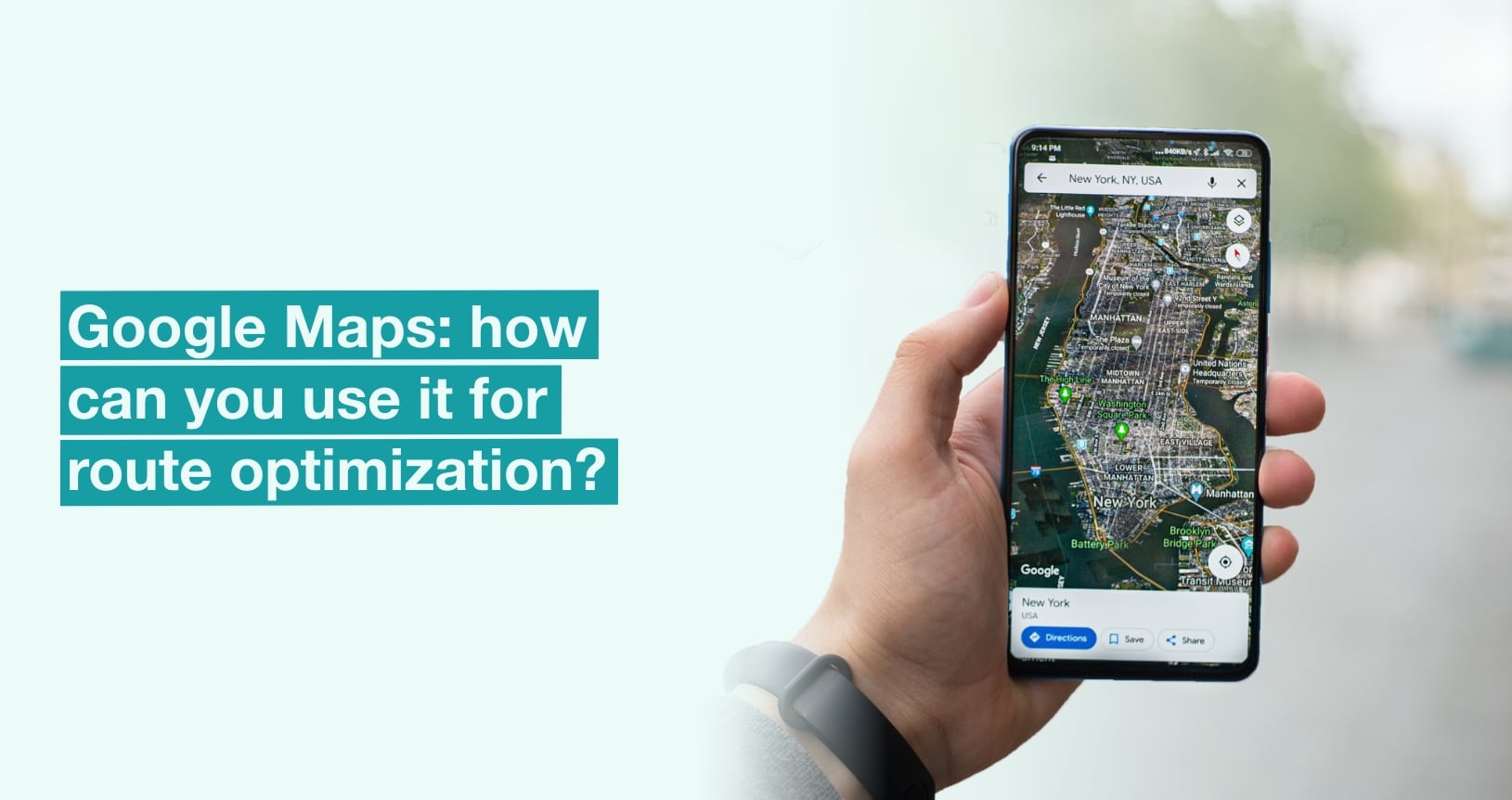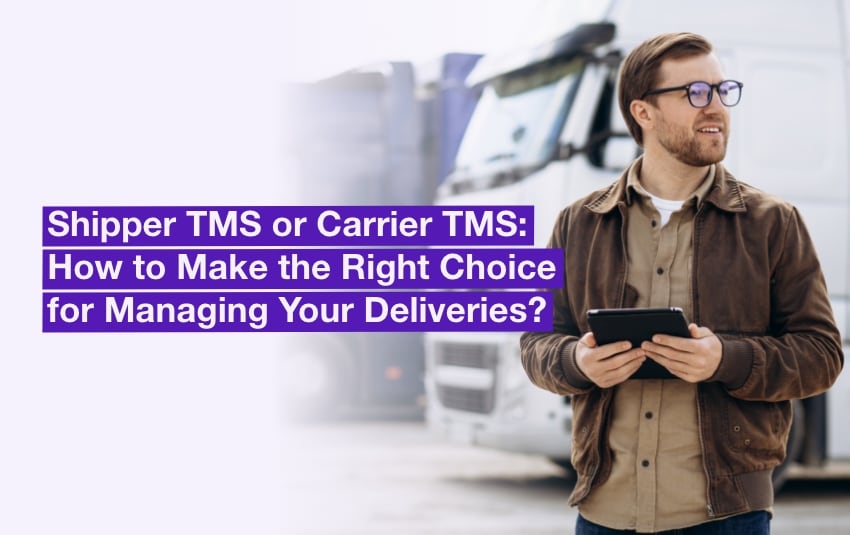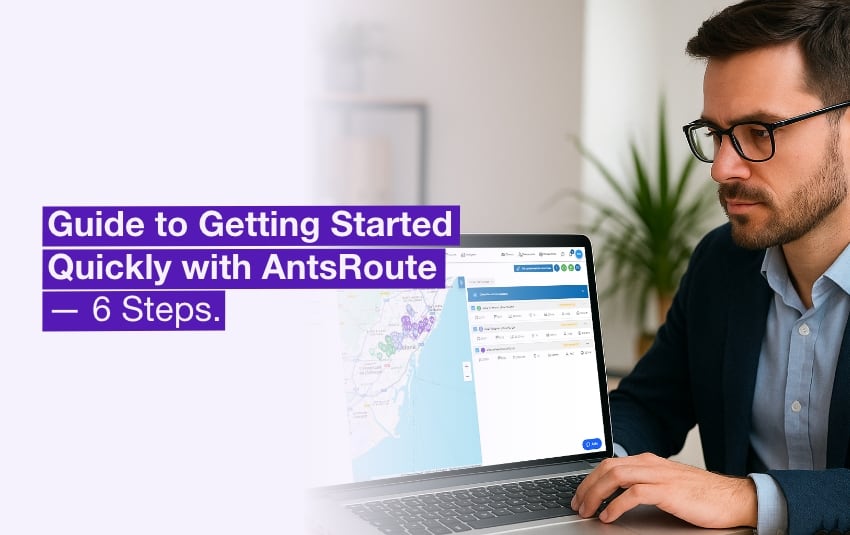Blog > Field Service > Google Maps: Route Optimization or Not?
Google Maps: Route Optimization or Not?
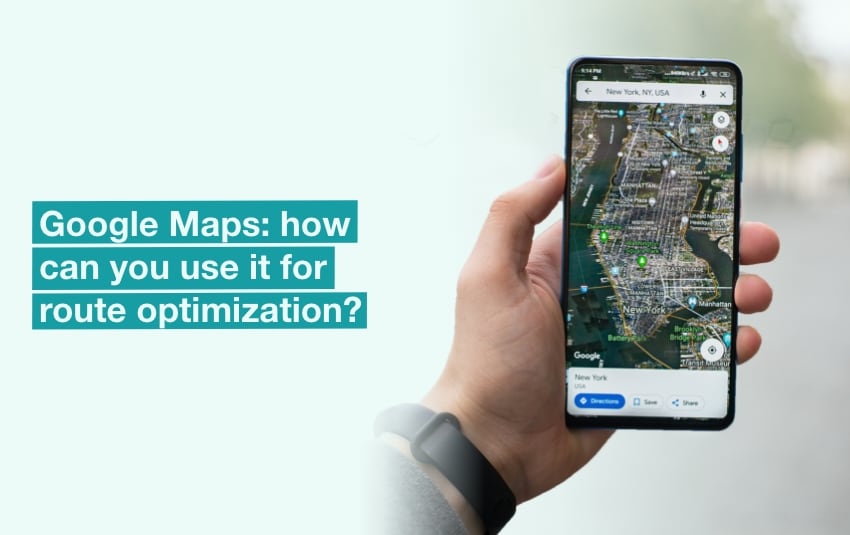
Google Maps: Route Optimization or Not?
Published on 19 October 2020 • Reading time: 7 min read
For many years now, Google Maps has been THE global reference for web mapping services, with over 200 countries mapped and almost a billion active users every month. The navigation application is used by individuals and professionals to determine the shortest route from point A to point B.
Boosted by the pandemic crisis, home delivery services have grown steadily over the past three years. Initially, managers used the Google Maps application to plan routes with several stops.
But can you really plan optimized routes with Google Maps? What about companies with several delivery drivers? What about routes with many stops? These are just some of the questions we’ll be answering.
Table of contents
- Is Google Maps right for your business?
- Route optimization software to determine the best order of stops
Google Maps lets you plan simple routes using just a few addresses. The use of route optimization software is recommended for more than 10 stops. But also to organise the routes of several drivers.
Is Google Maps right for your business?
Since its launch in 2005, the functions of Google Maps have continued to evolve. Today, the application is one of the most powerful navigation tools available. Whether you’re on foot, in a car or on a bike, the Google application lets you determine the best route to your destination in a matter of seconds. Google Maps users like the tool because it’s free, easy to use and requires no technical skills.
Plan routes with only two addresses on Google Maps
- Google Maps geocodes two points A and B on a map: the application identifies the latitude and longitude of the two addresses before positioning them on a map.
- Calculating the best route: the mobile app, available on iOS and Android, then determines the best route based on distance, driving time and traffic conditions. Google Maps also suggests a number of alternative routes.
- Estimated time of arrival at address B: Google Maps determines the ETA – Estimated Time of Arrival – by taking real-time traffic into account. The data is collected directly from the smartphones of users connected to the application. For even more accuracy, Google Maps takes into account current traffic conditions. In concrete terms, this means variations in traffic depending on the time of day and the day of the year.
Multi-stop itineraries: is Google Maps suitable?
Since 2016, Google Maps has made it possible to organize routes with multiple addresses. The users can now plan routes with up to 10 stops. However, we can’t really talk about route optimization, which is the confusion made by many Google Maps users.
Contrary to popular belief, Google Maps does not indicate the order of stops…
After entering the various addresses by hand, the user has to determine the most efficient order by drag-and-drop. This is a particularly time-consuming task, with no guarantee of finding the optimum order. It is precisely this non-automated scheduling that differentiates Google Maps from the route optimization solutions.
The navigation tool allows you to find the quickest route between two stops A and B. Google Maps also lets you plan up to 10 stops (A to J) in a route. However, this mapping service does not allow you to determine the optimal order in which you should visit the addresses A to J.
Another limit is that these stops cannot be assigned to two or more delivery drivers or technicians. The management of certain logistics or technical operations sometimes requires the consideration of different factors, business or time constraints. Google Maps features are therefore limited to simple route planning.
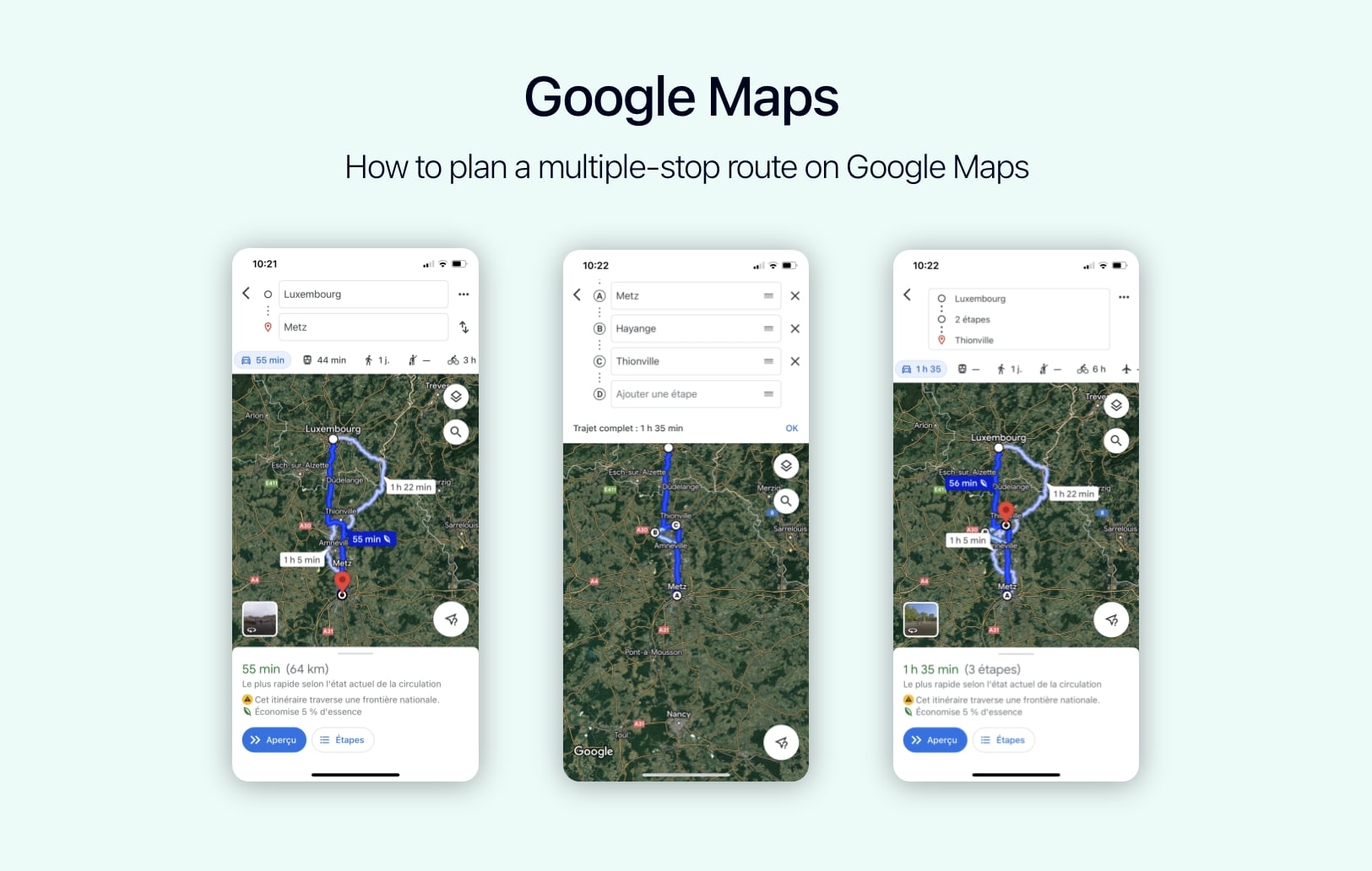
Planning a multi-stop route on Google Maps.
Who is Google Maps designed for?
In short, the Google Maps application is mainly useful for:
- Determine a route with no more than 10 stops.
- Assign all stops to a single driver.
- Plan itineraries that do not have to meet business or time constraints (delivery or visit time slots, work hours of field staff, limited vehicle carrying capacity, etc.).
Route optimization software to determine the best order of stops
Route optimization platforms stand out from GPS navigation tools thanks to their particularly powerful algorithms. In just a few moments, they can determine the optimal order for making dozens of stops at different addresses, while taking into account traffic conditions and business constraints. Thanks to this artificial intelligence, which analyzes a multitude of data when organizing routes, you can increase your productivity and boost the profitability of your logistics or maintenance activities.
The use of AntsRoute route optimization software, for example, reduces operational costs associated with team travel in the field by almost 35%.
Manage a set of time and business constraints
- Time slots: your customers are only available at a certain time of day to receive a parcel or benefit from a service. Between 10:00 and 12:00, for example.
- Duration of service: you offer services that sometimes require you to be present on the customer’s premises for different lengths of time.
- Contractual deadlines: you must respect a deadline for the completion of certain services.
- Preferred field worker: your service agents must be assigned to specific customers or geographical areas from time to time.
- Recurrence: your operations may require regular visits to certain customers, so you need to schedule regular appointments on a daily, weekly or monthly basis.
- Working hours of drivers: you need to take into account variable working hours, breaks and absences of field staff when calculating routes.
- Starting and ending addresses: you need to consider the locations from where your field workers will start and end their journeys (warehouse, office, home, specific address, etc.).
- Skills: you need to assign tasks according to the skills of your staff, to ensure a better resolution rate at first visit.
- Type of vehicle: you need a different type of vehicle for certain operations (commercial vehicle, heavy goods vehicle, refrigerated vehicle, vehicle with compartments).
- Capacity of vehicles: you have to respect the loading capacity of each vehicle, assign the most suitable vehicle according to weight, volume or number of packages to be transported, and eventually manage returns to the warehouse to reload the vehicles before the operators continue their route.
- Pick-up & delivery: your business involves collecting goods from one address for unloading at another, or loading goods at point A for delivery to point B.
Optimize routes with multiple stops
Unlike the Google Maps application, route optimization solutions have algorithms to automatically determine the best order of stops. Although some users of the famous navigation application try to determine an acceptable stop order using drag-and-drop, beyond five stops, this is almost impossible.
On AntsRoute, the user simply adds or imports a file with a list of addresses to visit. The platform then smartly organizes these stops. It’s a guaranteed time-saver for teams!
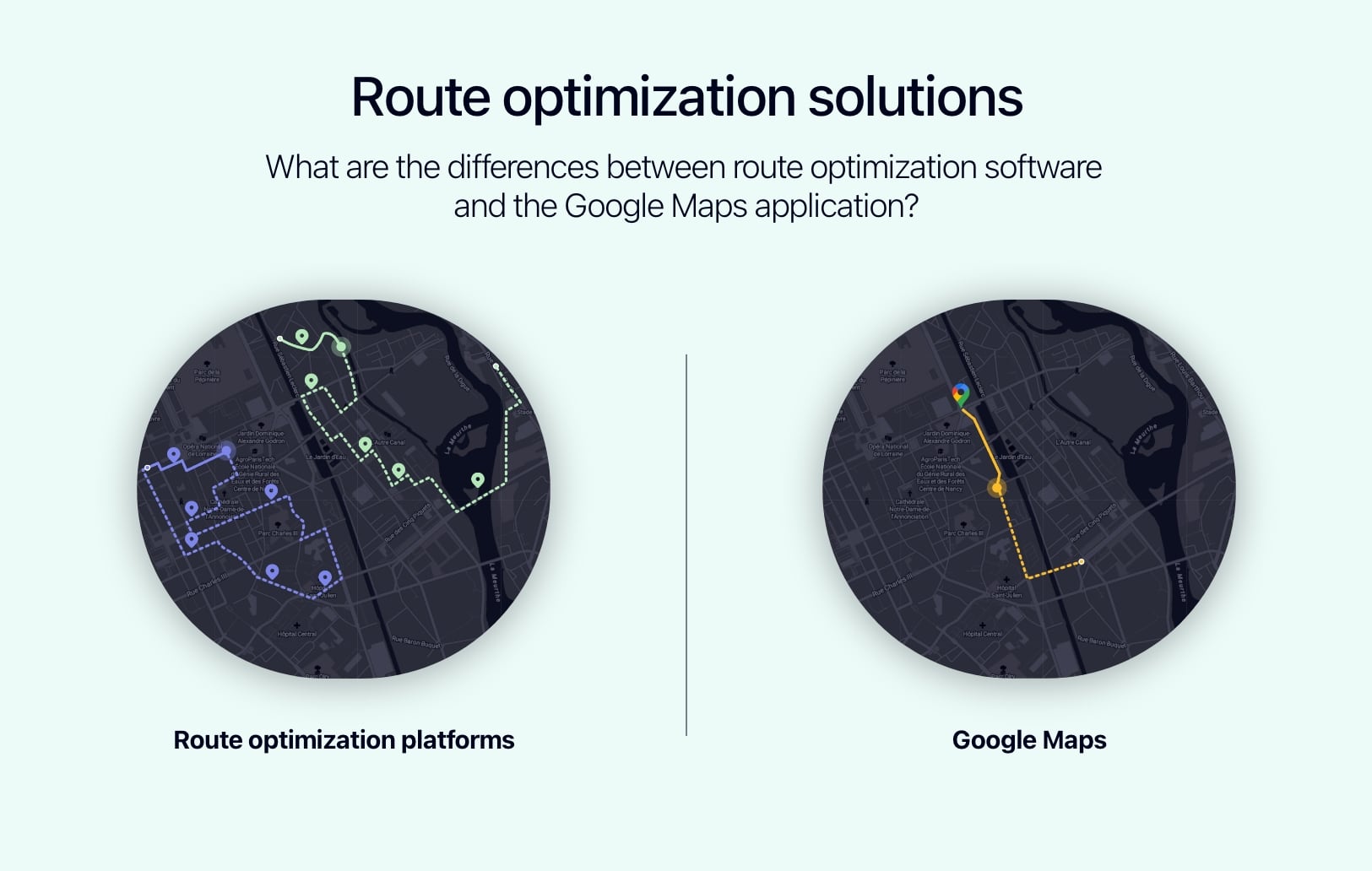
The differences between Google Maps and a route optimization platform.
Several field technicians or delivery drivers complete the routes
The route scheduler usually has a list of tasks to divide between several operators. The problem is that the number of possible routes increases with the number of drivers. It’s no longer even possible to assign the different deliveries or services by hand.
In addition to limiting the number of kilometers traveled between two stops, the person in charge of planning must take into account the constraints mentioned above: departure and arrival addresses, work hours, lunch breaks.
Unlike a route optimization platform, assigning the different stages by hand doesn’t always balance out the workload between the different workers.
With AntsRoute, you can determine the filling rate of your schedules and balance the workload between the different drivers according to the capacity of your vehicles and the availability of each driver.
Meet customer expectations right from the first visit
AntsRoute offers a system for sending SMS or email notifications to customers:
- Message before the visit with date and estimated time of arrival.
- Alert as soon as the driver starts his route, with the waiting time before his arrival.
- Message after the driver’s visit to gather customer feedback on service quality.
By sending notifications, you improve customer satisfaction. Another advantage: customers are sure to be at home at the time of the agent’s visit, so you can avoid a second visit, which is particularly costly for your company.
It’s also important to note that route optimization platforms generally offer a mobile application designed for field teams. The delivery drivers and technicians can collect proof of delivery: photos of goods delivered, customer signature, barcode scan, etc. All these documents can be used to generate delivery notes and service reports, which are then sent to customers. This system ensures traceability of deliveries and services.
All this information should enable you to choose the most suitable tool for optimizing your routes. To try AntsRoute free of charge and without commitment for 7 days, register here.
Optimise your routes today
Free 7-day trial | No credit card required
Contenu
- Is Google Maps right for your business?
- Plan routes with only two addresses on Google Maps
- Multi-stop itineraries: is Google Maps suitable?
- Who is Google Maps designed for?
- Route optimization software to determine the best order of stops
- Manage a set of time and business constraints
- Optimize routes with multiple stops
- Several field technicians or delivery drivers complete the routes
- Meet customer expectations right from the first visit

